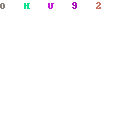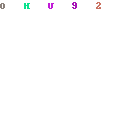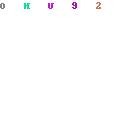Get A General Map about Alnaddy.com
Alnaddy.com was detected in September, but seems to flourish again nowadays. Arabic country is under its radar. You simply get contracted with it when you are not carefully click a link. Once it affects successfully, you will be constantly redirected to its page as displayed below:You may have tries to reset your browser, but no luck. It will only work after a complete removal of its malignant program files, processes, .dll files and registry entries as it is those things that block you from resetting your start page and browser configuration.
Yet it seems to be harder to delete the hijacker than previous days. So you have to take action the moment you get it, otherwise it will take longer time to remove it, besides, more personal information will be exposed, what's worse, if you ever typed password of your bank account, your money will be extorted directly. Should you have any confusion after taking steps below, you are welcome to contact Tee Support experts for detailed instructions.
What Evil Things Alnaddy.com Contributes?
- It is installed without your consent
- It hijacks Google and other search results
- It replaces your original homepage and hijacks all the websites you want to visit
- It creates numerous links to advertising pages
- It comes integrated with lots of spyware and adware parasites
- It can cause the infected computer work slow and it’s difficult to get rid of this bug
Detailed Instruction for Radical ILivid Removal
1. Go to the Start Menu. Select Control Panel → Add/Remove Programs.
2. Search for ILivid in the list. Select the program and click Remove button.
3. Remove ILivid browser add-ons Internet Explorer:
a) Open Internet Explorer. Go to Tools → Manage Add-ons.
b) Remove all ILivid components
4. Go to the Registry Editor to delete all related entries listed below
a) Click “Start” menu, hit “Run”, then type “regedit” click “OK”.


b) Delete associated ILivid files and registry values:
Files:
%AppData%\[Trojan name]toolbardix.ini %AppData%\[Trojan name]toolbarquid.dat %AppData%\[Trojan name]toolbarlog.txt %AppData%\[Trojan name]toolbarpreferences.dat %AppData%\[Trojan name]toolbarstat.log %AppData%\[Trojan name]toolbarstats.dat %AppData%\[Trojan name]toolbaruninstallIE.dat %AppData%\[Trojan name]toolbaruninstallStatIE.dat %AppData%\[Trojan name]toolbarversion.xml
Registry values:
HKEY_LOCAL_MACHINE\SOFTWARE\Classes\[Trojan name]\IEHelper.DNSGuardCurVer
HKEY_LOCAL_MACHINE\SOFTWARE\Classes\[Trojan name]\IEHelper.DNSGuardCLSID
HKEY_LOCAL_MACHINE\SOFTWARE\Classes\[Trojan name]\IEHelper.DNSGuard
HKEY_LOCAL_MACHINE\SOFTWARE\Classes\[Trojan name]\IEHelper.DNSGuard.1
HKEY_LOCAL_MACHINE\SOFTWARE\Microsoft\Internet Explorer\Toolbar\”[Trojan name]”
Tips for Future Virus Prevention
- Use a firewall to block all incoming connections from the Internet to services that should not be publicly available. By default, you should deny all incoming connections and only allow services you explicitly want to offer to the outside world.
- Ensure that programs and users of the computer use the lowest level of privileges necessary to complete a task. When prompted for a root or UAC password, ensure that the program asking for administration-level access is a legitimate application.
- Turn off file sharing if not needed. If file sharing is required, use ACLs and password protection to limit access. Disable anonymous access to shared folders. Grant access only to user accounts with strong passwords to folders that must be shared.
- If a threat exploits one or more network services, disable, or block access to, those services until a patch is applied.
- Always keep your patch levels up-to-date, especially on computers that host public services and are accessible through the firewall, such as HTTP, FTP, mail, and DNS services.
Video Gide on How to Remove Alnaddy.com
Note: instruction above pertains to experienced PC users. Due to its ability to invite other malware, you are very like to be under other PC attack even after the removal of Alnaddy.com. To get help instantly, you’re welcome to start a live chat with Tee Support expert 24/7 available here.

.gif)

No comments:
Post a Comment